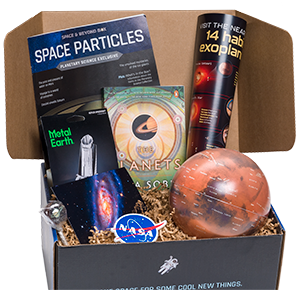The Space & Beyond Blog

Family Stargazing with kids
Introduce astronomy to your family as you explore the night sky together
Stargazing is a wonderful family-friendly activity and a fun and rewarding way to introduce children to the many wonders of the night sky. It’s easy to get started, too, as long as you have clear skies, a good observing site, and a basic knowledge of the constellations.
Choose your time and place
Nighttime viewing from your backyard is a great starting point — preferable, even, given its convenience. But once you’ve become familiar with the night sky, get the full experience of an evening under the stars by escaping from city lights. Find a remote, rural area with minimal light pollution. A state park or other safe, accessible spot is a great choice. Altitude helps the view, too, so you should ideally locate a spot atop a hill.
Not sure what stargazing sites you might have nearby? Your local astronomy club is a great resource.
Weather is another consideration for sky observing. Some atmospheric factors can dictate the quality of the sky’s viewability on any given night. An air mass colder than the ground will produce puffy cumulus clouds and unsteady air, but it is usually relatively free of dust. An air mass warmer than the ground will produce stratiform clouds, haze, or mist, and hold copious amounts of dust. Bad visibility is almost guaranteed at least 24 hours following the passage of a front (the boundary between warm and cool air masses) or trough (an elongated area of low pressure). Seeing can be very good with thin cirrus clouds, but the opposite is true when high cirrus clouds combine with low-level crosswinds.
Here are more observing tips to help you get started.

Start with the moon
The Moon, with its many craters and phases, is a great starting point for family observing. The Moon first becomes visible as a thin crescent low in the western evening sky. Each night thereafter, it appears to grow and move eastward until Full Moon, after which its lit part shrinks to invisibility. A great way to get to know the phases of the moon is to study an earth-moon-sun diagram.
While it seems the best time to observe the lunar surface is during a Full Moon, it’s actually the worst! That’s because the Sun is shining on the Moon from a point directly behind us, minimizing shadows and therefore not revealing much detail. We think the best lunar viewing times are when the thin crescent becomes visible after New Moon until about two days after First Quarter (evening sky) and about two days before Last Quarter to almost New Moon (morning sky). Shadows are longer then, and features stand out.

Learn the constellations
Navigate your way through the starry sky starts with two major signposts: The Big Dipper and Orion the Hunter. While not a constellation, the Big Dipper — a group of seven bright stars that dominates the constellation Ursa Major the Great Bear — is one of the most recognizable patterns in the night sky, and an ideal guide for locating surrounding constellations while stargazing.
Orion the Hunter is key to navigating around the sky from late autumn until early spring, and it appears as a large rectangle high in the south-southeastern sky.
From these two signposts, learning the constellations becomes progressively easier as you learn what you’re looking for and where. Start with just a couple per season and focus on the ones that will be easiest to stop. To learn more about the various constellations and their seasons, check out Astronomy’s constellation article.

Observing equipment
You can identify a lot of night sky targets with just your naked eye. If you want to capture more, a basic pair of binoculars or a moderately sized telescope will be your best friend. For more information on buying and using observing equipment, check out our blog on getting started in amateur astronomy.
A planisphere is a valuable aid for spotting the constellations. It shows a map of which stars are visible in the night sky at any particular time. Buy one for each member of your family or make your own.
Keep a log
Now that you’re ready to explore the sky, remember to log what you’re seeing! It’s a great way to keep track of the constellations and sky events you’ve witnessed. A simple log can include the date and time of your observation, the sky conditions, what object(s) you looked at, and a brief description of each.
Most importantly, have fun and enjoy your time under the stars!
